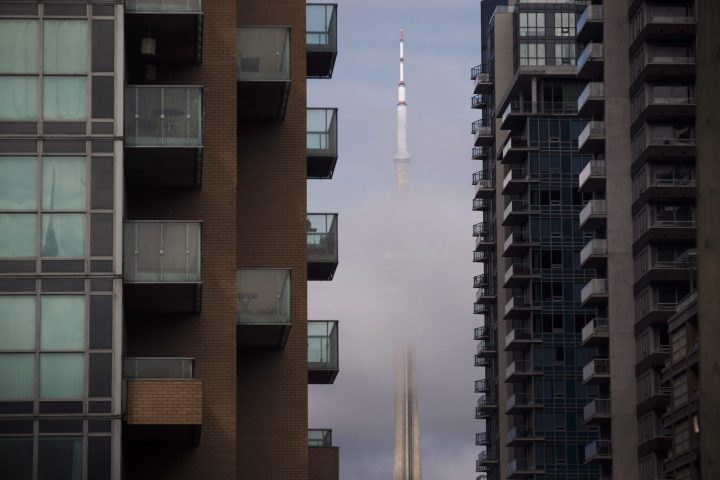During the COVID-19 pandemic, the red-hot housing market saw a frenzy of demand for single-family homes and cottages as buyers sought more space, away from urban cores. Smaller apartments in downtown Toronto languished on the market.

But the tides began to turn in 2021.
According to the Toronto Regional Real Estate Board’s (TRREB) latest data, condo apartment sales soared 155 per cent year-over-year during the spring quarter and the average selling price rose 10.8 per cent during the same timeframe.
“A lot of that has to do with first-time home buyer activity. Younger households were a little bit slower to recover or bounce back from the initial phase of the pandemic,” Jason Mercer, TRREB’s chief market analyst, tells Global News.
He says the real estate board conducted polling regarding buying intentions at the end of 2020, which found that 40 per cent of the respondents who said they wanted to purchase a home this year were going to be first-time home buyers.
Analysts say new entrants into the housing market are just the first leg of the condo comeback story.
Data from Urbanation’s second-quarter Condominium Market Survey, released Tuesday, shows that the Greater Toronto Area’s new condo market fully recovered from its COVID-19 lull and has since returned to near record-high sales volumes. Urbanation says the so-called “905” — areas beyond Toronto’s downtown — continued to be a driving force as developers and buyers shifted to more affordable options.
“The spotlight has shifted back on the condo market,” Urbanation president Shaun Hildebrand said in an emailed statement to Global News. “Condos are experiencing a rebound in demand as single-family home prices have risen out of reach for many buyers while the reopening of the economy is bringing more people back into the city.”
Hildebrand says he expects prices to climb in the near term because new condo inventory in the Toronto area is at a three-year low.
The condo recovery in Metro Vancouver has been more muted, with apartment sales up 19 per cent year-over-year in July according to the Real Estate Board of Greater Vancouver (REBGV). But condo prices followed the trend of the region’s overall housing prices and dipped slightly between June and July.
New condos are showing signs of a rebound, though. According to real estate research firm MLA Canada, 3,000 pre-sale condos were released within 20 new projects in June, which marks the highest level since November 2018.
Mercer says prices are poised to rise in Toronto’s condo segment. He expects a bigger increase when international borders fully reopen and immigration, based on federal targets to welcome more than 400,000 newcomers annually between 2021 and 2023, resumes.
“The Greater Toronto Area will continue to be Canada’s single greatest metropolitan beneficiary of that population growth and all of these people are going to require a place to live,” says Mercer.
He says greater planning will be required from all levels of government because the housing supply issues, specifically the so-called “missing middle,” that existed pre-pandemic have not been addressed.
American architect Daniel Parolek is credited with coming up with the term the “missing middle” to describe a range of housing types that fall, in terms of density, somewhere between a detached house and a mid-rise building. These types of buildings are said to be missing from major cities, including Toronto and Vancouver, in recent decades.
“If we want to see sustained affordability over the long term, we need to see more housing supply,” says Mercer. “We also need to see a greater diversity of housing supply, so more bridging the gap between traditional single-family homes and condominium apartments.”






Comments